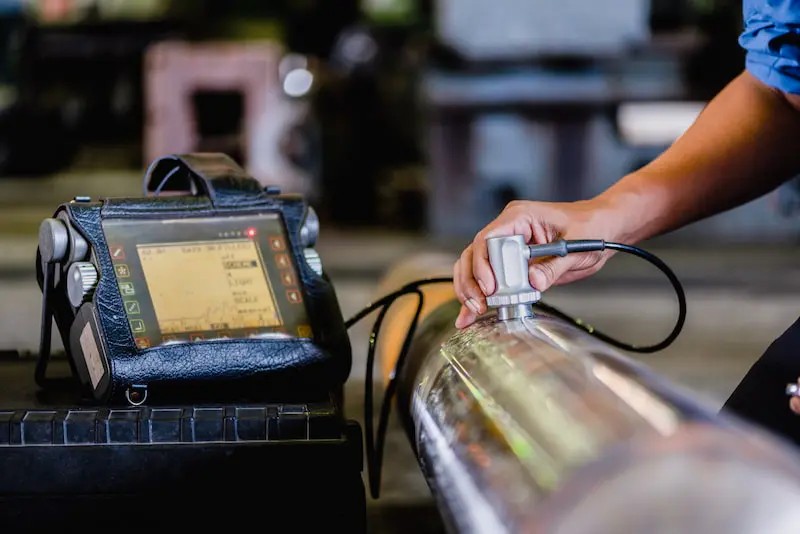A non-destructive test (NDT) is a technique used to evaluate the properties or integrity of a material, component, or structure without causing damage or alteration to it. It allows for inspection, measurement, and analysis without the need for disassembly or destruction, ensuring the item’s continued usability or functionality. We have known what is NDT and let us now discuss the main purpose of NDT: –
- Quality Assurance – One of the primary goals of NDT is to ensure the quality and reliability of products and materials. By conducting non-destructive tests, manufacturers can identify any flaws, defects, or irregularities that may compromise the performance or safety of the item being tested. This allows for early detection and mitigation of potential issues before they become critical, reducing the risk of failures, accidents, and costly recalls.
- Safety and Risk Management – NDT plays a crucial role in ensuring the safety of various structures and components, particularly in industries such as aerospace, oil and gas, and construction. By examining materials and structures through non-destructive means, potential defects, cracks, or weaknesses can be identified, preventing catastrophic failures that could lead to accidents, injuries, or loss of life. Regular NDT inspections contribute to effective risk management by identifying and addressing potential hazards before they escalate.
- Cost Savings – Non-destructive testing can help companies save significant costs in several ways. Firstly, NDT enables the detection of flaws and defects early in the manufacturing process, reducing the need for expensive rework or scrapping of defective components. Secondly, by identifying and addressing structural weaknesses before they lead to failure, NDT helps avoid costly downtime, repairs, and replacements. Thirdly, NDT facilitates condition-based maintenance, allowing for the optimization of maintenance schedules and the elimination of unnecessary inspections or repairs.
- Compliance with Standards and Regulations – Various industries are subject to stringent standards, codes, and regulations to ensure product quality, safety, and environmental responsibility. NDT techniques are often prescribed by these standards as a means to assess compliance. By conducting non-destructive tests, companies can demonstrate adherence to these requirements and maintain the necessary certifications and approvals for their products and operations.
- Research and Development – Non-destructive testing techniques also play a vital role in research and development activities. They allow scientists and engineers to analyze the behaviour, properties, and performance of new materials, prototypes, or experimental designs without causing permanent damage. NDT helps assess the suitability of materials for specific applications, optimize manufacturing processes, and refine designs, thereby facilitating innovation and technological advancement.
- Structural Health Monitoring – NDT is instrumental in the continuous monitoring and evaluation of structures throughout their service life. By periodically inspecting components or systems using non-destructive techniques, engineers can assess structural integrity, detect early signs of degradation, and predict remaining useful life. This enables proactive maintenance and repair strategies, extending the lifespan of structures, minimizing downtime, and ensuring operational safety.
Conclusion – The purpose of carrying out non-destructive tests is to ensure product quality, safety, and reliability, while also driving cost savings, compliance with standards, and enabling research and development. By employing NDT techniques, companies can identify flaws and defects, assess structural integrity, monitor performance, and make informed decisions regarding maintenance, repairs, and product development. Overall, NDT plays a vital role in enhancing the efficiency, effectiveness, and sustainability of industries across the globe.

